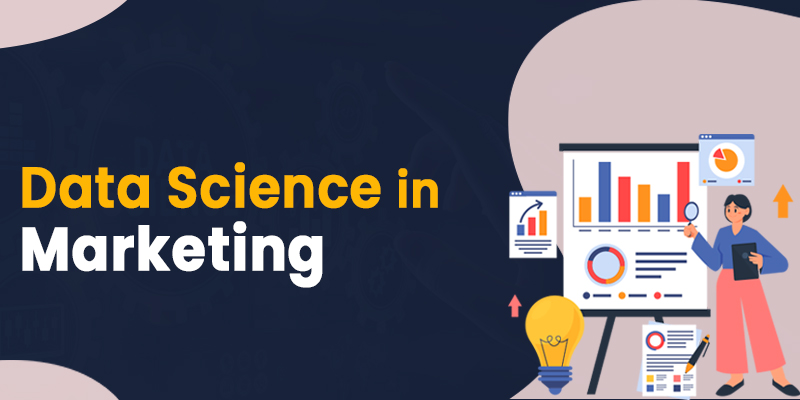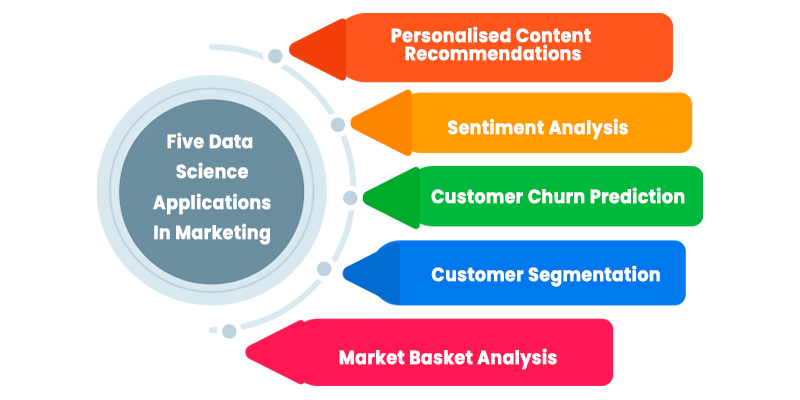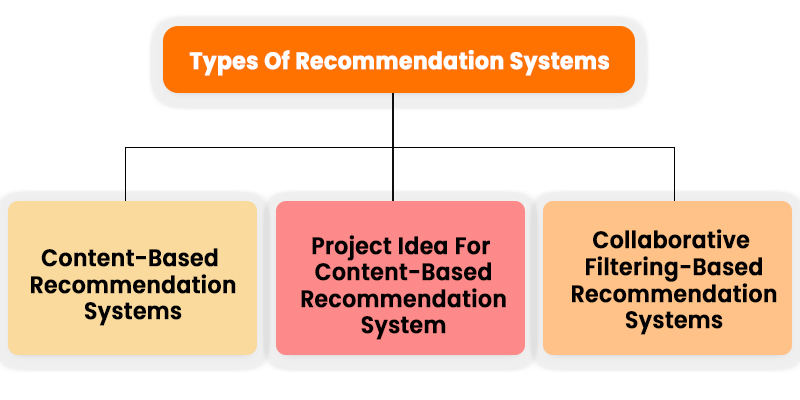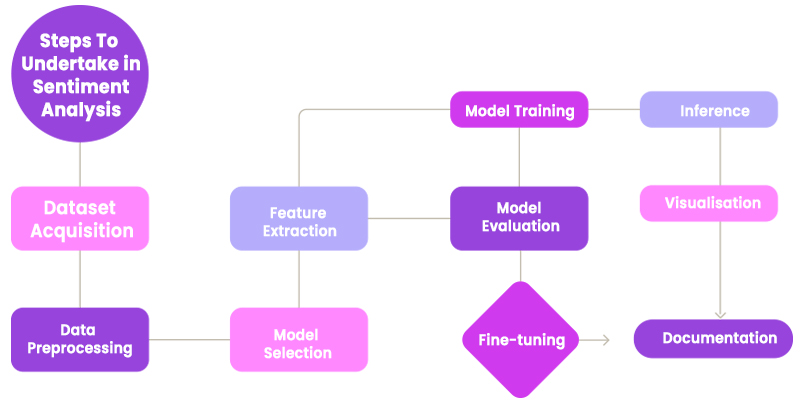
There are five ways you can apply data science in the realm of marketing, accompanied by project suggestions to help you enhance your data science skills in this field:
An Introduction to Data Science in Marketing
Data Science is among the rapidly expanding domains in India, with job prospects in this field on the rise. Organizations are increasingly seeking to leverage data for informed decision-making, leading to a Future Scope of Data Science that is high in the country. Have you ever made purchases on an e-commerce platform and subsequently noticed an inundation of advertisements promoting similar products whenever you surf the internet? This phenomenon exemplifies the practical application of data science within marketing.
Over the past couple of years, a significant proportion of the world's data has been generated, affording companies the unprecedented capability to amass and store customer data on an unprecedented scale. With each interaction that users have with an organisation's website, social media presence, or point-of-sale system, a plethora of new data points is created. For individuals keen on delving deeper into the realm of data analysis and its applications, exploring a comprehensive Data Science Course in Chennai can provide valuable insights into handling and interpreting large-scale data sets, enabling professionals to derive meaningful insights and make informed decisions based on the wealth of data available.
Subsequently, this data is harnessed to formulate insights pertaining to user behaviour, subsequently facilitating the delivery of tailored advertisements, personalised product suggestions, and exclusive promotional offers.
In our daily routines, many of us engage with data science in digital marketing applications, often subconsciously influencing our decision-making processes.
Within this article, we will delineate five methods for implementing data science in digital marketing and marketing big data. Furthermore, we will delve into a selection of personal projects that can be integrated into your data science portfolio, each corresponding to one of these use cases. Lastly, we will explore the reasons behind pursuing a career as a marketing data scientist and provide guidance on securing a position in this field.
Five Data Science Applications in Marketing

1. Personalised Content Recommendations
Prominent entities such as Netflix, Spotify, and Amazon employ sophisticated recommendation systems to furnish their users with personalised content suggestions tailored to their interactions on the platform.
For instance, consider the scenario where you view a movie on Netflix and assign it a favourable rating. Upon reopening the application, you will encounter recommendations for movies bearing resemblance in terms of genre, content, and cast members. This serves as an everyday illustration of how recommendation engines shape our digital experiences.
These recommendation systems exhibit an increasing level of efficacy as users continually engage with them.
For example, if you are a newcomer to Spotify, your initial music suggestions will be relatively generic. The platform's algorithm, lacking sufficient data on your preferences, will offer a broad spectrum of musical genres that align with mainstream tastes.
However, as your tenure on the platform extends, the recommendation engine garners a deeper understanding of your musical inclinations and aversions. Consequently, your music recommendations undergo a fine-tuning process to cater specifically to your preferences. Remarkably, the algorithm can even anticipate the types of music that may resonate with you during distinct seasons or at varying times of the day. For individuals interested in delving deeper into the intricate world of data analysis and algorithmic modelling, exploring comprehensive Data Science Courses in Bangalore can offer valuable insights into the techniques and methodologies employed in understanding and interpreting user preferences and behaviour, providing professionals with the necessary skills to develop and optimise recommendation engines and personalised user experiences.
Types Of Recommendation Systems

It is possible to generally divide recommendation systems into two main categories: content-based recommendation systems and collaborative filtering-based recommendation systems.
-
Content-Based Recommendation Systems:
Content-based recommendation systems generate suggestions solely based on the inherent characteristics of the products or items in question.
For instance, if you have a preference for reading novels from the Percy Jackson series, a content-based system might recommend "Heroes of Olympus," authored by the same writer and falling within a similar genre.
However, one limitation of this approach is that it tends to recommend items that are quite similar to those you've already engaged with. If you have a penchant for Percy Jackson, you may only receive recommendations for adventure and fantasy books, even if you might potentially find enjoyment in a non-fiction or suspenseful novel.
To address this limitation of content-based recommendation systems, you can turn to a collaborative filtering-based recommendation system, which will be elucidated further in this article.
Project Idea For Content-Based Recommendation System:
If you're a novice looking to gain experience in building recommendation systems, you can begin with the Kaggle Movie Dataset. This dataset comprises metadata for 45,000 movies, encompassing details such as posters, release dates, genres, and revenues.
To embark on creating a content-based recommendation system using the movie information available in this dataset, you can follow along with the "Recommender Systems in Python" tutorial on Datacamp.
Additionally, if you seek more guidance on constructing a movie recommendation system, consider enrolling in a live code-along training session on Datacamp. These sessions are led by experts who will teach you how to develop recommender systems in R within 1.5 hours, offering the opportunity to seek clarification on any challenges encountered along the way.
-
Collaborative Filtering-Based Recommendation Systems:
Collaborative filtering-based models generate suggestions by analysing past user behaviour. These models can be further categorised into user-based and item-based collaborative filtering.
User-based collaborative filtering, as the name implies, groups together users with similar preferences or behaviours. The algorithm then provides product recommendations based on the shared preferences of these user segments.
In contrast, item-based collaborative filtering groups similar items together based on user preferences, facilitating recommendations based on what other users with comparable tastes have favoured.
Project Idea For Collaborative Filtering-Based Recommendation System:
To construct a collaborative filtering-based recommendation system, you can make use of the Book Recommender System Dataset available on Kaggle. This dataset comprises only three variables: user ID, book ISBN code, and user ratings for each book.
If you're unfamiliar with how collaborative filtering functions, a recommendation system tutorial can serve as a helpful starting point for your project.
2. Sentiment Analysis
Opinion mining, sometimes known as sentiment analysis constitutes the process of discerning the underlying emotional tone conveyed within a piece of text. It stands as yet another prominent application of data science within the domain of marketing.
Illustrating the business value that sentiment analysis imparts to organisations, consider the following example:
A bank operating in South Africa found itself grappling with an unusually high rate of customer attrition. A substantial number of users were defecting to rival financial institutions, severing their ties with the bank. In a bid to uncover the root cause, the bank turned to sentiment analysis for assistance.
To address this issue, the bank amassed a dataset encompassing more than 2 million data points extracted from social media channels. Subsequently, they subjected this dataset to sentiment analysis model training.
The insights derived from this analysis revealed that a majority of the negative comments stemmed from customers who expressed dissatisfaction with the bank's insufficient staffing of tellers during the lunch hour, which resulted in prolonged waiting times.
In response to these findings, the bank took corrective action by deploying additional tellers during peak hours, consequently reducing customer attrition rates.
This exemplifies how sentiment analysis can serve as an invaluable tool for organisations seeking to enhancetheir range of products and obtain a competitive advantage. Beyond this application, sentiment analysis finds utility in diverse areas such as product analysis, market research, and the extraction of insights from user reviews.
Project Idea For Sentiment Analysis:
Embarking on a sentiment analysis project, you can initiate by developing a Movie Review Sentiment Analysis model utilising a dataset available within the Natural Language Toolkit (NLTK) library. NLTK is a Python package that furnishes an array of algorithms for Natural Language Processing.
In this project, you can leverage the movie review dataset integrated into the NLTK library, which can be effortlessly imported with a single line of code. Your objective will be to construct an algorithm capable of categorising movie review data into positive and negative sentiment categories.
Sentiment Analysis Project Idea
A promising project idea for getting started with sentiment analysis involves the creation of a Movie Review Sentiment Analysis model using a readily available dataset within the Natural Language Toolkit (NLTK) library. NLTK is a Python package renowned for its rich repertoire of algorithms designed for Natural Language Processing (NLP).
Project Description:
Objective: Develop a sentiment analysis model capable of classifying movie reviews into positive and negative sentiment categories based on the text content.
Steps To Undertake:

- Dataset Acquisition: Utilise NLTK's built-in movie review dataset, which can be effortlessly imported with a single line of Python code. This dataset contains a collection of movie reviews categorised into positive and negative sentiments.
- Data Preprocessing: Prepare the dataset for analysis by performing necessary data preprocessing steps. This typically includes tasks such as tokenisation, stemming or lemmatisation, and removing stopwords.
- Feature Extraction: Transform the textual data into numerical features so that machine learning algorithms may utilise them. Common techniques include TF-IDF (Term Frequency-Inverse Document Frequency) and word embeddings (e.g., Word2Vec or GloVe).
- Model Selection: Choose an appropriate machine learning or deep learning model for sentiment analysis. Common choices include Support Vector Machines (SVM), Naive Bayes, Recurrent Neural Networks (RNNs), or Transformer-based models like BERT.
- Model Training: Split your dataset into training and testing sets to evaluate model performance. Train the selected model on the training data.
- Model Evaluation: Evaluate the model's performance on the testing dataset using relevant metrics such as accuracy, precision, recall, and F1-score.
- Fine-tuning: Experiment with hyperparameter tuning and model architecture adjustments to enhance performance if necessary.
- Inference: Deploy the trained model to classify sentiment in new, unseen movie reviews.
- Visualisation: Create visualisations, such as confusion matrices or word clouds, to gain insights into the model's predictions and the most influential terms in sentiment classification.
- Documentation: Document your project comprehensively, including explanations of data preprocessing, model selection, and results. Share your findings and insights from the sentiment analysis.
This project not only offers hands-on experience in sentiment analysis but also provides a foundation for more complex NLP tasks. It allows you to explore various techniques and models while working with a real-world dataset. Moreover, you can further extend this project by incorporating sentiment analysis into applications like social media sentiment tracking or product review analysis.
3. Customer Churn Prediction
Customer attrition, sometimes referred to as customer churn, is the result of a user ending their commercial connection or level of involvement with a company. For instance, when a Netflix user decides to cancel their subscription, they become a churned customer.
It is essential to note that replacing a churned customer typically incurs higher costs for companies than retaining an existing one. Consequently, To stop this occurrence, a lot of businesses engage data scientists to proactively identify consumers who are likely to churn.
Here is an illustrative example of how a customer churn prediction model can prove instrumental in helping companies retain their user base:
Imagine you are a subscriber to an Internet Service Provider (ISP) and have recently encountered persistently slow connection speeds. Despite lodging several complaints and attempting to resolve the issue through customer support, the problem persists. You have even resorted to restarting your router and reconnecting to the network multiple times.
Frustrated with the subpar user experience, you eventually decide to switch to a competitor ISP.
Meanwhile, the ISP's data science team diligently collects customer behavioral data, tracks user activity during network usage, and compiles information related to customer complaints. Upon consolidating this comprehensive dataset, the data science in digital marketing team identifies you as a high-risk candidate for churning.
Promptly, they notify the marketing and product teams that you are likely to discontinue your business with the company.
Subsequently, the company's marketing team takes swift action by reaching out to you with tailored promotions and discounted WiFi plans. They even offer to upgrade your existing subscription at no cost. After the upgrade, you experience significantly faster connection speeds, and your overall interaction with the ISP becomes more enjoyable. Consequently, you decide to continue your subscription with the current provider instead of switching to a competitor.
The aforementioned scenario exemplifies the invaluable utility of customer churn prediction models in retaining an organisation's existing customer base. This application contributes directly to a company's bottom line and is frequently employed by subscription-based platforms like Netflix and Spotify, whose primary revenue source relies on user retention and renewal.
4. Customer Segmentation
Customer segmentation is the strategic process of categorising users into distinct customer sub-groups based on shared characteristics, behaviours, or preferences. Each identified segment is subsequently targeted with tailored promotions and product offerings that align with their unique traits. This practice enhances the effectiveness of marketing efforts and helps organisations maximise their engagement and revenue from each customer group.
To illustrate the value of customer segmentation for businesses, consider the following example:
An e-commerce company endeavours to optimise its marketing strategy by implementing a customer segmentation model.
Promotion Hunters Segment:
Users who frequently browse the platform but tend to make purchases primarily when discounts are available are classified as "Promotion Hunters." To cater to this segment's behaviour, the company promptly sends email notifications to all customers in this group whenever there is an ongoing discount promotion. This proactive approach capitalises on their inclination to make purchases during discounted periods, thereby increasing sales from this segment.
Quality-Oriented Shoppers Segment:
In contrast, some users prioritise product quality over affordability and are willing to make purchases irrespective of the price. This segment values high-end items. The marketing team tailors its approach for this group by showcasing premium products that align with their demonstrated interests. By highlighting products these customers have previously shown an interest in, the company encourages them to make higher-value purchases.
By effectively segmenting customers based on their behaviours and preferences, the company optimises its marketing efforts. Customers with significant purchasing power are presented with more expensive, premium offerings that resonate with their preferences, thereby encouraging increased spending. Conversely, users who prioritise affordability are enticed with cost-effective products during promotional periods, enhancing the likelihood of conversions.
This example underscores how customer segmentation enables companies to strategically target their audience, maximising profitability and ensuring that marketing resources are allocated efficiently.
One of the most prevalent applications of customer segmentation models lies in the creation of ad groups within marketing campaigns. Platforms like Facebook leverage user demographic and behavioural marketing big data to enable companies to run advertisements that precisely target custom audience groups based on specific traits such as location, age, gender, brand affiliations, and social connections.
Customer segmentation is often achieved through the utilisation of unsupervised machine learning models, such as K-Means clustering, which groups users based on their shared characteristics and behaviours. This data-driven approach empowers organisations to refine their marketing strategies and deliver more relevant content to distinct customer segments.
5. Market Basket Analysis
Market basket analysis, Known as association mining, this data analysis method is used to examine products that are regularly bought in tandem. This approach involves examining historical transaction data to uncover patterns of product combinations commonly found in customer purchases.
The insights derived from market basket analysis can be instrumental for retailers in refining store layouts and encouraging customers to make additional purchases during a single transaction.
For instance, it's a well-known retail practice to position items like baby formula and diapers in close proximity, as customers who buy one are likely to purchase the other. However, purchase patterns aren't always as apparent. Depending on factors like region, cultural influence, and demographics, customers may exhibit purchasing associations that transcend traditional product categories. Many of these correlations remain hidden to the human eye, prompting organisations to rely on data science techniques like market basket analysis.
Consider the following example that illustrates how market basket analysis can unearth associations that elude human observation:
One of the most renowned instances of market basket analysis revolves around the "beer and diapers" case study. In this scenario, a Midwest grocery chain employed data mining techniques to unveil items frequently bought together.
Their analysis unveiled an intriguing trend: customers often purchased beer and diapers in conjunction, particularly on Friday evenings. While this correlation may seem coincidental, a plausible scenario explains it:
A young father, weary from a long workweek, decides to stop by the grocery store on a Friday night to purchase a few beers. His wife, aware of the plan, asks him to buy diapers for their newborn on his way back. This behavior gradually becomes a routine, with working fathers frequently purchasing beer and diapers together before heading home on Fridays.
In response to this revelation, the store strategically places beer and diapers in proximity, leading to a notable uptick in sales.
Although this story was first reported in the mid-1990s, its authenticity has been debated over time. Regardless of its veracity, this use case serves as a compelling illustration of how statistical analysis can unearth concealed correlations that evade human observation.
Market basket analysis isn't limited to brick-and-mortar retail stores; it also extends to e-commerce platforms. Online retailers commonly display highly correlated products on the same webpage to capture the user's attention.
For example, while shopping online for black jeans, customers may encounter matching shoes featured at the bottom of the page, enticing them to consider purchasing a bundle of products rather than just a single item. Once again, this strategy translates directly into increased sales for the company, as customers end up buying more than originally intended.
If you are from Pondicherry or in a nearby area, check out our Data Science Course in Pondicherry and have a chat with our data science trainers.
Data Science in Marketing - Next Steps
Data science has demonstrated a wide array of applications within the realm of marketing, as discussed in the preceding sections. These applications yield tangible benefits for organisations, ranging from increased sales and enhanced customer satisfaction to promoting higher consumption.
In the past, when organisations did not have access to extensive customer data, marketing experts were primarily responsible for executing many of the aforementioned applications. Sentiment analysis and market research, for instance, relied on surveys, and targeted advertising was driven more by intuition than data-driven insights.
Presently, with the exponential growth in data accumulation and storage, companies have transitioned toward data-driven marketing strategies. Nevertheless, it's essential to recognise that merely hiring data scientists to address marketing challenges is not a comprehensive solution.
Data scientists possess the proficiency to manage intricate datasets, construct highly precise predictive models, and perform statistical analyses. However, these skills, while valuable, are insufficient in themselves to extract meaningful insights from data. Data scientists often lack domain knowledge in marketing and may struggle to connect the available data with real-world business issues.
Conversely, marketing experts hold a deep understanding of consumer behaviour, possess the acumen to frame problem statements effectively and offer guidance for strategic marketing decisions. Yet, they may lack the technical acumen required to manipulate and analyse vast datasets.
A data scientist specialising in the marketing domain represents a pivotal role that combines the strengths of both disciplines. These individuals possess a unique skill set, allowing them to bridge the divide between data science in digital marketing and marketing. They can translate data into actionable insights, align data-driven decisions with business objectives, and ultimately drive profitability for organisations. For those looking to enter this dynamic sector as a career, exploring a comprehensive Data Science Course in Madurai can offer valuable insights into the techniques and methodologies employed in data analysis and marketing.
The convergence of data science in digital marketing and marketing expertise within a single role offers an invaluable advantage to companies. These professionals are adept at leveraging data to inform marketing strategies, optimise customer experiences, and achieve tangible business outcomes.
How to Become a Marketing Data Scientist
Data science in digital marketing has demonstrated a wide array of applications within the realm of marketing big data, as discussed in the preceding sections. These applications yield tangible benefits for organisations, ranging from increased sales and enhanced customer satisfaction to promoting higher consumption.
In the past, when organisations did not have access to extensive customer data, marketing experts were primarily responsible for executing many of the aforementioned applications. Sentiment analysis and market research, for instance, relied on surveys, and targeted advertising was driven more by intuition than data-driven insights.
Presently, with the exponential growth in data accumulation and storage, companies have transitioned toward data-driven marketing strategies. Nevertheless, it's essential to recognise that merely hiring data scientists to address marketing challenges is not a comprehensive solution.
Data scientists possess the proficiency to manage intricate datasets, construct highly precise predictive models, and perform statistical analyses. However, these skills, while valuable, are insufficient in themselves to extract meaningful insights from data. Data scientists often lack domain knowledge in marketing and may struggle to connect the available data with real-world business issues.
Conversely, marketing experts hold a deep understanding of consumer behaviour, possess the acumen to frame problem statements effectively and offer guidance for strategic marketing decisions. Yet, they may lack the technical acumen required to manipulate and analyse vast datasets.
A data scientist specialising in the marketing domain represents a pivotal role that combines the strengths of both disciplines. These individuals possess a unique skill set, allowing them to bridge the divide between data science in digital marketing and marketing. They can translate data into actionable insights, align data-driven decisions with business objectives, and ultimately drive profitability for organisations.
The convergence of data science in digital marketing and marketing expertise within a single role offers an invaluable advantage to companies. These professionals are adept at leveraging data to inform marketing strategies, marketing big data, optimise customer experiences, and achieve tangible business outcomes.
Check out our Data Science Course in Coimbatore and start your journey in the field of data science with a strong foundation.
